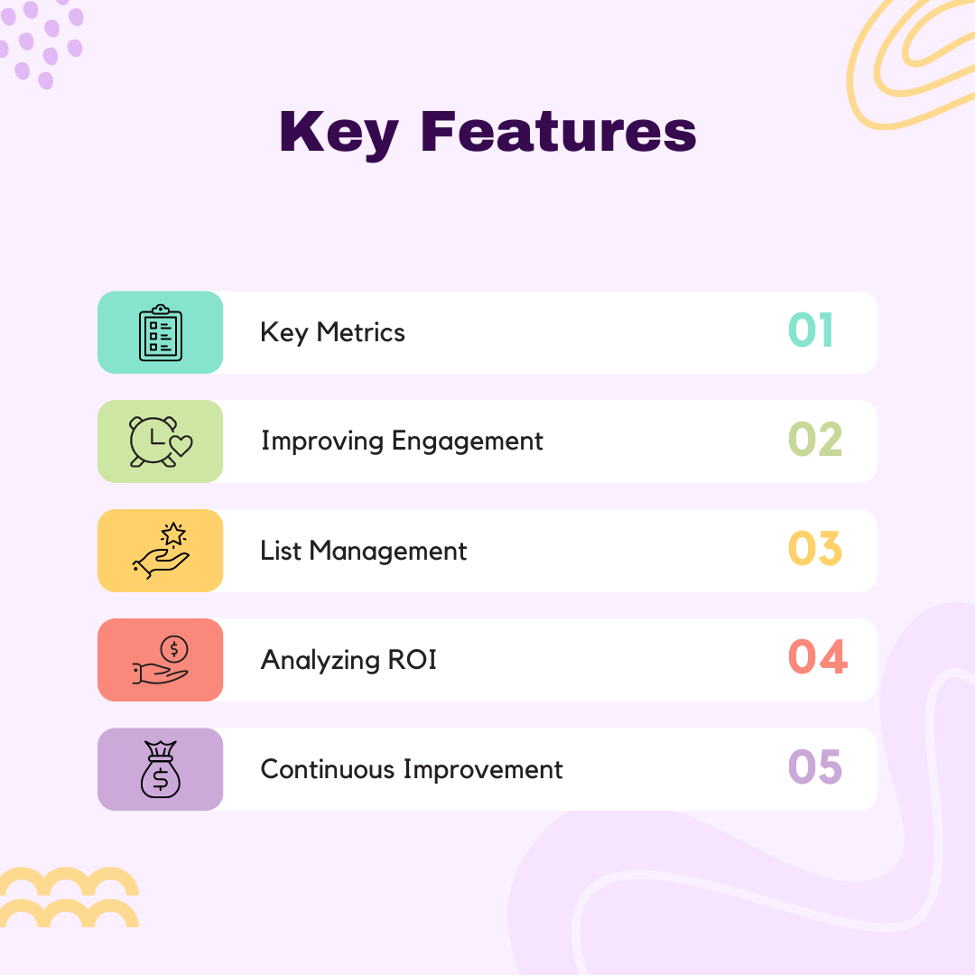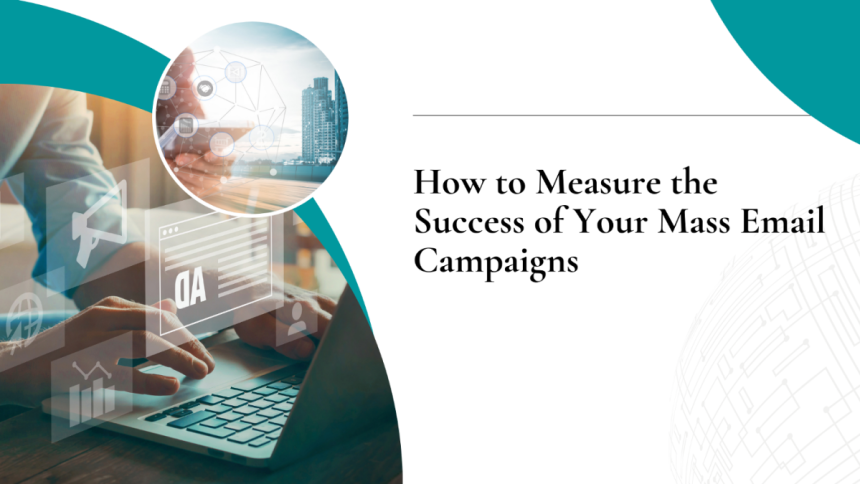Are your email campaigns delivering the results you want? Email marketing is one of the most effective ways to engage your audience, but how can you be sure it’s working?
Tracking key performance metrics gives you insight into what’s working and where you can improve. By analyzing these metrics, you can refine your approach, optimize engagement, and ultimately boost conversions. Let’s take a closer look at the essential metrics you need to measure the success of your mass email campaigns.
Open Rate: Gauging Initial Engagement
When sending mass emails, ensuring the privacy of your recipients while maintaining professionalism is crucial. With the right practices in place, you can effectively manage large-scale email campaigns while keeping recipient details confidential. If you’re looking for guidance on how to do mass mailing, employing methods that allow for personalization without revealing recipient information can enhance engagement while maintaining trust and compliance with email regulations. Optimizing your email strategy through segmentation and tailored content will further strengthen your connection with your audience.
Click-Through Rate (CTR): Tracking Engagement Beyond the Open
The click-through rate (CTR) is calculated by the number of recipients who click on links contained within your email. Such a metric is crucial, as high CTR demonstrates that your content resonates well with your audience and would entice them to further interaction. To enhance your CTR, focus on crafting clear and effective call-to-actions (CTAs). Putting just one prominent CTA in an email would likely be a good facilitator to enhance engagement, and the clear recipients would know what they should do next.

Conversion Rate: Measuring Actionable Results
It is just a simple definition of what percent of recipients do the desired activity after they receive a mail, whether to buy something or register for a service. That’s one of the most important metrics because that reflects the return on your investment and the return on your email marketing efforts.
Optimization of the landing pages in such a way that they are smooth and user-friendly increases the rate of conversion. You make more recipients go through with the actions you asked for by making intuitive and engaging landing pages.
Bounce Rate: Monitoring List Health
Bounce rate is the number of emails that bounced back and did not get delivered to the inboxes. It essentially refers to which percent of your emails bounce back. This is important because an unfavorable bounce rate will affect only your sender’s reputation, thereby raising your probability of bounces in the future.
Clean your list often for unwanted invalid or outdated e-mail addresses to have a clean email list and lessen bounce rates. The use of some procedures like email verification and a double opt-in system will ensure that your list is not stuffed with engaged and correct contacts.
Unsubscribe Rate: Understanding Audience Disengagement
Unsubscribe rates are the percentage of recipients who opt out of your list. This is an important metric because it might imply that either your content probably doesn’t align to what your audience wants to get or see, or how often you’re emailing doesn’t align to your audience.
The way to address this, therefore, is to allow subscribers the leeway to select the frequency with which they would want to receive emails from you and ensuring that your content remains relevant and engaging to them. This way, you will be able to get into a much more harmonious relationship with preferences as they arise and keep receiving interest from them in communications from you.
Spam Complaint Rate: Protecting Sender Reputation
The spam complaint rate measures the percentage of recipients who mark your email as spam. This metric is important because a high spam complaint rate can negatively impact your email deliverability and harm your sender’s reputation. To mitigate this risk, ensure that your emails provide clear value to the recipients and include easy-to-find options for opting out.
By adhering to best practices and focusing on relevant content, you can help reduce the likelihood of spam complaints and maintain a positive relationship with your audience.
Engagement Over Time: Monitoring Audience Interaction
Engagement over time involves tracking changes in audience interaction, such as opens and clicks, over a specific period. This measurement is crucial for understanding which types of content resonate with your audience and for pinpointing when engagement begins to wane.
To enhance engagement, regularly update your content and experiment with different sending times and frequencies. This approach will help keep your audience interested and maintain consistent interaction with your emails.
List Growth Rate: Tracking Audience Expansion
Another measure that could be critical is the rate of growth of your list, indicating an increase in your subscriber base over some period. A constantly increasing list shows that your email marketing is performing well and that your audience is engaged with your brand to respond. To further complement your list growth, look for subscribers to subscribe to your email via your social media sites and provide incentives to newly subscribed subscribers that may attract them to your camp. This avails you more people and the multiplication of successes of your email campaigns.
Return on Investment (ROI): Determining Financial Success
Return on investment indicates the revenues offered through an email campaign against the cost of that campaign. It is vital because it expresses a view of whether you are successful or not on the financial side of your ventures in email marketing. The return on investment can be improved by automation follow-up, exclusive deals, and going after the high-value parts of your audience. This will help you maximize returns and enhance the efficiency of your campaign.
Comparison Table: Key Metrics for Email Campaign Success
| Metric | Industry Average | Improvement Tactics |
| Open Rate | 15%-25% | Personalize subject lines, optimize send times |
| Click-Through Rate | 2.5% | Clear CTAs, mobile-responsive design |
| Conversion Rate | 1%-5% | Optimize landing pages, and align content with customer needs |
| Bounce Rate | < 2% | Clean email list, use double opt-in |
| Unsubscribe Rate | Varies by industry | Reduce email frequency, improve content relevance |
| Spam Complaint Rate | < 0.1% | Follow best practices, provide opt-out option clearly |
| List Growth Rate | Consistent increase | Promote sign-ups, offer incentives |
| ROI | $42 for every $1 spent | Target high-value customers, use exclusive offers |
Conclusion
By focusing on the right metrics open rate, CTR, conversion rate, and beyond—you can evaluate the performance of your mass email campaigns more effectively. Understanding these metrics helps you fine-tune your email strategy to drive better engagement, minimize unsubscribe rates, and maximize ROI.
FAQs
What is the ideal open rate for email campaigns?
A healthy open rate typically ranges between 15% and 25%, with industry benchmarks varying. Crafting engaging subject lines and targeting the right audience can help you reach these benchmarks.
How can I reduce my bounce rate?
Regularly clean your email list, remove inactive subscribers, and use validation tools to ensure that all email addresses are valid.
How do I accurately track conversions from email campaigns?
Use tools like UTM parameters, integrated analytics, or specific landing pages to track and measure conversions directly tied to your email campaigns.
Lynn Martelli is an editor at Readability. She received her MFA in Creative Writing from Antioch University and has worked as an editor for over 10 years. Lynn has edited a wide variety of books, including fiction, non-fiction, memoirs, and more. In her free time, Lynn enjoys reading, writing, and spending time with her family and friends.















